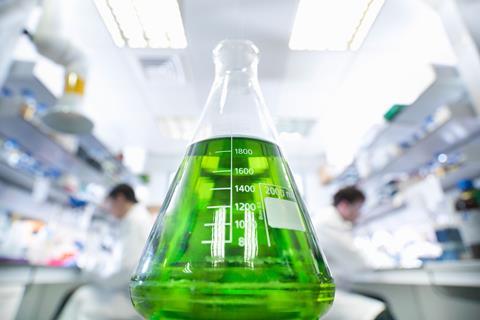Discover how green chemistry can boost learners’ problem-solving abilities and address misconceptions
Green chemistry is a relatively new set of principles that places the safety of both people and the environment at its centre. Green chemistry curriculums provide students with the opportunity to see how chemistry can help solve some of the big challenges of sustainability, bringing relevance to the chemistry classroom.

Researchers in the US have investigated the effectiveness of a green chemistry curriculum for undergraduate chemistry students. They had previously redesigned their curriculum to introduce green chemistry concepts, and also use green chemistry as the context to broader chemistry content. This redesign included many new green chemistry post-lab questions, pre-lab questions and in-lab prompts designed to connect to the 12 principles of green chemistry.
While many institutions are now introducing green chemistry in their curriculums, the assessment of the effectiveness of these changes is not well understood. The researchers developed new test instruments to evaluate students’ understanding of green chemistry. They also used these to gain insight into their own curriculum.
Teaching tips
- Introduce the principles of green chemistry in your teaching to expose your students to authentic problem-solving opportunities. Green chemistry problems often have more than one correct answer. You could use the electronic supplementary information from this paper as a good example of the preparation of cinnamaldehyde.
- Consider students’ prior knowledge of green chemistry and how this affects their learning of new concepts. Get students to report their prior knowledge, for example using the test instruments developed in this paper.
- Explicitly connect concepts like atom economy to green chemistry.
- Students will encounter the terms natural and renewable regularly – possibly in connection with consumer products – which will potentially introduce them to a range of misconceptions. Ask your students to define these terms so you can diagnose and correct misconceptions, such as the concept that all natural products are inherently safe.
The risk of misconception
A large part of the research involved designing and validating test instruments, and showing that the researchers’ green chemistry curriculum had a positive effect on their students. The researchers were also looking to gain insight into students’ prior green chemistry knowledge and their potential misconceptions.
Just over 1000 chemistry undergraduate students took part in the evaluation in 2018 and 2019. All of them entered the course with some preconceived green ideas and beliefs.
Interestingly, few students mentioned the concept of atom economy in connection to green chemistry prior to the course, despite most being able to define this concept when directly asked. When asked to explain the difference between the terms natural and renewable, students provided incorrect or partially incorrect responses, despite being confident in their answers.
Even after students had engaged with the green chemistry curriculum, they still struggled to differentiate between these two terms. The researchers postulated that students’ lack of success in gaining an accurate understanding of the terms natural and renewable was down to their prior beliefs.
Reference
L B Armstrong et al, Chem. Educ. Res. Pract., 2024, https://doi.org/10.1039/D2RP00270A
Fraser Scott
References
L B Armstrong et al, Chem. Educ. Res. Pract., 2024, https://doi.org/10.1039/D2RP00270A














No comments yet